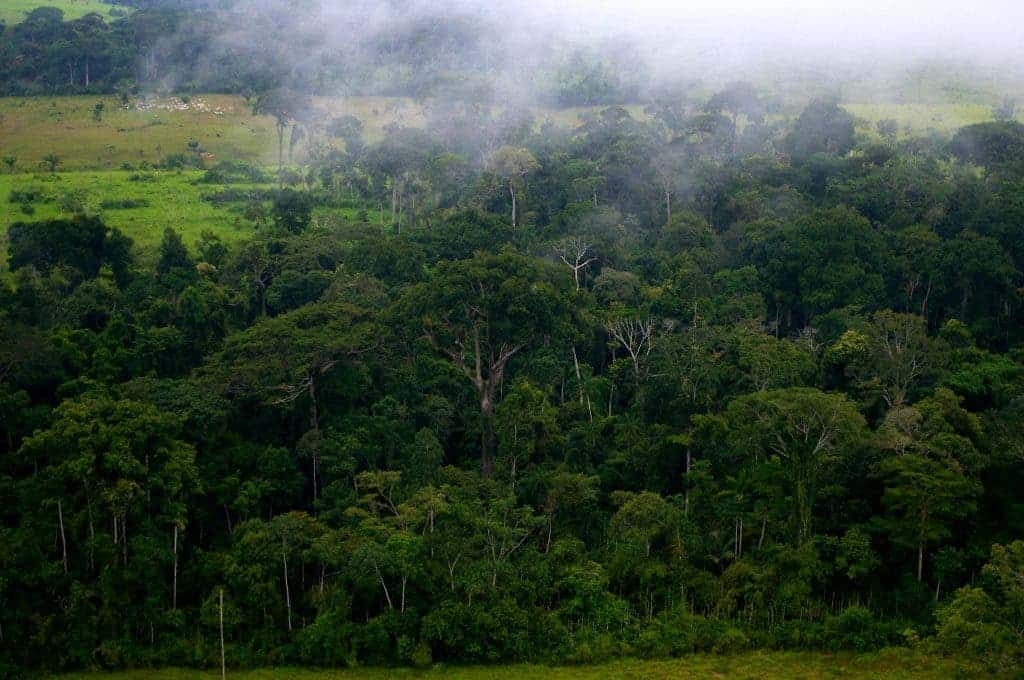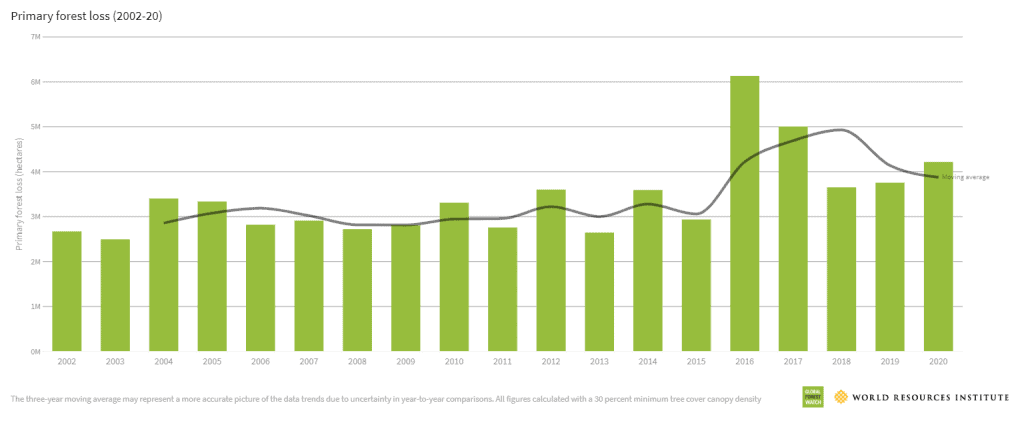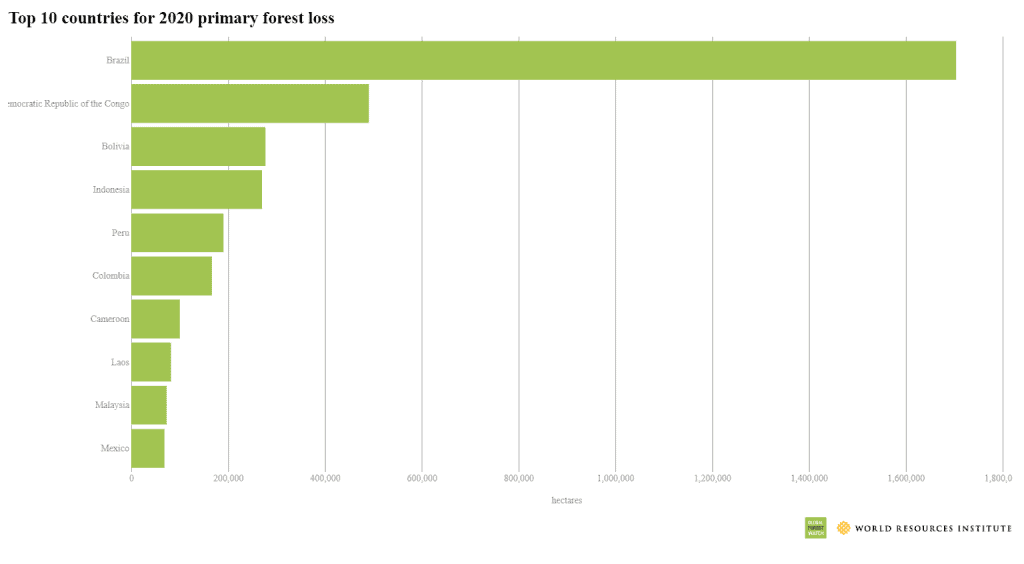The global economic downturn caused by the pandemic last year didn’t slow down the destruction of tropical forests around the world. Quite the contrary: when no one was looking, deforestation surged.

At least 42,000 squared kilometers were lost in 2020 — a 12% increase compared to 2019, according to data from the University of Maryland and the online monitoring platform Global Forest Watch. It was the third-worst year for forest destruction since 2002 when comparable monitoring began.
The losses were especially severe in humid tropical forests such as the Congo, south-east Asia, and the Amazon. These forests are irreplaceable ecosystems and vital carbon sinks that regulate the global climate. These forests lost 4.2 million hectares in 2020, equivalent to the annual emissions of 570 million cars.
“We’re still losing primary forest at an unacceptable rate,” Rod Taylor, who oversights the Global Forest Watch platform, told the New York Times. “A 12% increase year over year is too much when the trend should be going down.”
As in past years, deforestation driven by commodities was the leading cause of tree cover loss both in primary and secondary forests in Latin America and Southeast Asia. Meanwhile, in Africa, the main cause was shifting agriculture, according to the report. Fires and other climate-related impacts also played a big role around the world.

Deforestation ranking
Unsurprisingly, Brazil was the country to lose the most forests last year, with a total of 1.7 million hectares – a 25% increase compared to 2019. The Amazon was the most affected region in the country, with 1.5 million hectares of forest lost. This coincided with a growing number of forest fires across the Amazon last year. All of this fits with the disregard shown by the current Bolsonaro administration towards protecting the environment and Amazonian forests.
Elsewhere in Latin America, forests have not fared much better. Bolivia rose to number three on the list of countries with the most tropical forest loss in 2020, passing Indonesia for the first time. As in Brazil, forest fires played a big role and affected several protected areas. Large-scale agriculture also affected forests.

Meanwhile, in Colombia, the rate of primary forest loss also rose in 2020. The country has had high rates of forest loss since the 2016 agreement between the government and the FARC guerrilla group, which led to a vacuum of power in previously controlled forest areas.
Peru was in fifth place for most tropical forest loss, mainly because of small clearings for agriculture and cattle ranching. The report also shows a number of new logging roads throughout the Peruvian Amazon rainforest. Gold mining, which used to be a key driver of deforestation, has slowed down thanks to government interventions.
African countries also experienced an increase in forest loss. Cameroon doubled the loss in 2020 compared to 2019, a process fueled by the expansion of small-scale shifting agriculture and wood energy demands. The Democratic Republic of the Congo (DRC) had the second-highest amount of forest loss behind Brazil, with 490,000 hectares lost.
A glimpse of hope
Forest loss decreased in Indonesia for the fourth year in a row in 2020, one of only a few countries where this happened. The country dropped out of the top three countries for primary forest loss for the first time since record-keeping began. This is mainly due to national and subnational initiatives from the government, such as a moratorium on new oil palm oil plantation licenses. In other words, forest conservation does work, when enforced properly.
Good news came out from Malaysia too, with a decline in forest loss for the fourth year in a row. The country has lost a fifth of its primary forest since 2001. The report highlighted promising actions for forest conservation, including a five-year cap on plantation area in 2019, and plans to toughen forest laws by increasing fines.
“While there is reason to celebrate this decline in primary forest loss, Indonesia and Malaysia must do more to continue and strengthen existing policies to ensure this trend continues, including extending the oil palm plantation license moratorium which is set to expire in 2021,” the report reads.
Looking ahead
Frances Seymour, a senior fellow at WRI, told the New York Times that globally it was “astonishing that in a year that the global economy contracted somewhere between 3 and 4%, primary forest loss increased by 12%.” She added that the world has yet to see the greatest impact on forests from the pandemic, “which will probably come into play as economies start to recover.”
In the report, the researchers argued that urgent action to tackle forest loss is needed. Countless species are being lost, the effects of climate change are already being felt and forest clearing is having an impact on the livelihoods of indigenous communities. They called to “reimagine policies and economies” in a way that protects forests “before it’s too late.”


